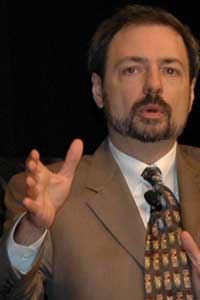Cisco's Giancarlo: There's a new computer bus in town


Giancarlo believes this "tipping point" in terms of switches being on performance par with computer buses is what's happening at the infrastructure level that's going to drive the next wave of innovation. Already, companies like VMWare and Virtuozzo have figured out how to virtualize X86 computers. So, you can imagine that once the processor is virtualized and once a computer's bus is elimated, you essentially have a new kind of computer (a virtual processor connected to a virtual bus). What happens next is anybody's guess. But it's definitely food for innovation. For example, it gives new meaning to the term operating system. Expounding on that notion, Giancarlo said:
The way we address larger scale problems [today] is to fragment them onto thousands of processors rather than layering the operating system across a large number of processors and resources. Maybe the operating system itself needs to change. The operating system makes an assumption that you have all these things; processors, memory, disk, etc. If all of them are virutalized, split up, and available on demand, then why not use open dialogues and open concepts to coordinate the communicatoin between them? Why use a closed operating system?
[Editor's Note: David's photographs of the two-day MIT conference can been seen in these galleries: Day One and Day Two.]